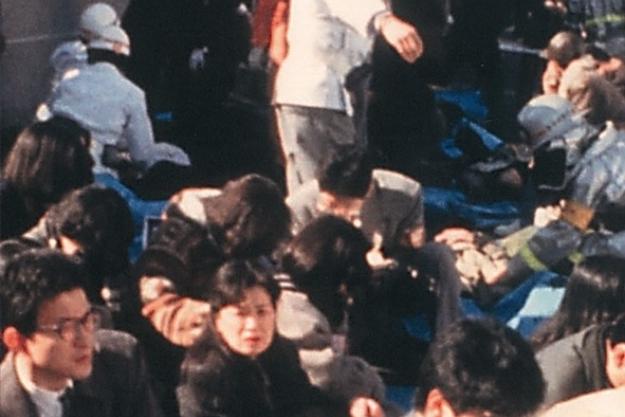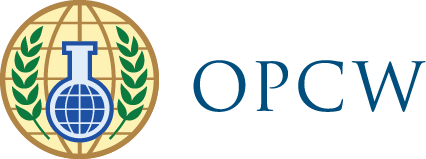
Sarin attacks on the Tokyo underground in March 1995, by the Aum Shinrikyo extremist cult.
By: Dr Andy Oppenheimer*
While the Cold War superpowers are slowly dismantling and disposing of their vast chemical weapons (CWs) arsenals, since 1991 through the outstanding and relentless efforts of the OPCW, the military threat from CWs has become increasingly focused on civilian terrorist scenarios and insurgency-prone theatres of war.
The most recent examples of insurgent use of CW were in Iraq in February and March 2007, when canisters of liquefied chlorine were incorporated into vehicle-borne improvised explosive devices in several attacks, one of which, on 21 February 2007, left several dead and scores suffering from exposure to the dispersed chlorine in an area of Baghdad. In each incident, varying quantities of the chemical agent were used; explosives ruptured the chlorine tanks and dispersed the chemical agent.
While such a dispersal method is inherently inefficient since much of the potential agent is burned or left oxidised in the ensuing explosion, it nevertheless caused a significant number of casualties, even if the number killed was not enormous, given the quantities of agent present. This illustrates the improvised nature of terrorism and the use of weapons primarily to terrorise. Although not efficient in military terms of weapons delivery, such chemical attacks have caused injury, chaos, and psychological damage (especially considering the previous immense suffering caused by CWs to Iraqi civilians). These attacks, however improvised and erratic, show a continued desire on the part of militants to expand their capabilities beyond the use of more conventional weapons.
Precedent: The Tokyo sarin attacks 1995
Civilian-based CW terrorist attacks are mercifully few. This may be due to lack of expertise and a preference for the tried and tested conventional improvised explosive device (IED). The main precedent is the sarin attacks on the Tokyo underground in March 1995 by the Aum Shinrikyo extremist cult. The instant contamination of hundreds of commuters by military-use CWs posed a totally different and more urgent set of response problems on a terrorist prime target —the transit system of a major capital city. That only 12 people were killed was due to the fact that the sarin was not of military grade, but almost 5,000 were exposed and hospitalised, including 135 ambulance workers. During the first 24 hours, 10 people died, nine at the accident site and one just after arrival at hospital. While lessons have been learnt from the incident, most notably improved response and personal protective equipment for first responders, the level of panic and chaos caused by the attacks would likely be repeated if multiple attacks occurred in enclosed spaces such as city subway trains.
Airport chemical weapons threats
Among the heightened threats to transit systems is of terrorists smuggling toxic substances into airport terminals. While security checks are made before check-in, only at a few airports worldwide are travellers being checked before entering the terminal. A possible scenario can be described as follows: A person enters a typically crowded airport terminal carrying a handbag, walks towards the centre of the terminal, takes a glass bottle out of the bag and throws it on the floor. It breaks, releasing a colourless, odourless liquid. Then the person takes out a small handgun and starts shooting at the passengers standing next to him/her. The guards of the airport respond rapidly and shout at everyone in the terminal to lie on the floor, shoot the person, and ensure he/she is dead. After just a few seconds all the prostrate passengers, including the guards, are experiencing breathing difficulties and nobody understands what is going on. Passengers who are still able to walk start running in different directions. Within minutes there are hundreds of people lying on the floor, injured or dead. Such an event will neutralise the terminal for many days, causing a temporary shutdown of air transportation and substantial economic damage.
Given that security checks are performed before check-in — in the centre of crowded terminals — there is actually no secure way to avoid such an event unless extra security measures are introduced, which could further hold up the travelling public. The response is based on the capabilities of the guards in place and the local first-responder services. Even in advanced countries — for example, the United States of America — the immediate outside response could arrive at the airport after too long a period, i.e. 10 to 30 minutes. In a chemical attack, time is the most important factor for saving lives. Airports must be prepared to respond immediately to any event, until the police assume responsibility. The first response would depend on how much time there is to understand the situation, provide information to the public, wait for the first responders to arrive, ensure they have the capabilities to treat the injured, and prepare the hospitals to deal with large numbers of casualties and decontaminate them.
As well as doing their regular jobs, guards equipped with personal protective equipment (PPE) must act as a task force for rescuing injured people from the terminal. An external system would be necessary to check people and luggage before they enter the terminal, a process which could identify, by profiling or advanced technology, the potential or suspected terrorist in advance. These suspects would be checked further in a protected area. Systems are coming on stream to monitor passengers in waiting areas for chemical warfare agents, for early detection and response. Direct closed circuit television (CCTV) cameras are being installed in areas of sensor activation for instant analysis.
Control of chemicals
It is difficult to control chemicals in an unstable country undergoing insurgent attacks, such as Iraq, where there are numerous potential sources of chlorine. And in other developed industrial nations, the chemical industry may not accept measures to restrict the movement and supply of their products. The United Kingdom introduced the Chemical Weapons Act in 1996 and the first prosecution and convictions under the new law, on 24 September 2008, was of directors of a chemical company for failing to notify the Government that their company produced more than one tonne of a chemical controlled under the Convention. In October 2008 a U.S. company in Illinois was fined US $115,000 for exporting a potential chemical weapons precursor, triethanolamine, to Angola, the Bahamas and the Dominican Republic without obtaining the necessary license. The 11 September 2008 fire in the Channel Tunnel, the cause of which is still to be established and which turned one of Europe’s most important transport routes into an enclosed incinerator that destroyed a freight train and all 27 trucks on board, illustrated the dangers of transporting common industrial chemicals.
As in many other countries, basic precautions include keeping bulk access points under proper controls and monitoring distributions as well as actual chemical warfare agents and certain precursor chemicals banned under the terms of the CWC. The wide availability of toxic industrial chemicals (TICs) poses a universal problem to counter terrorism efforts, which can possibly only be alleviated by individual country legislation and self-regulation by their respective chemical industries, particularly as regards transit both within and across borders.
*Dr Andy Oppenheimer was Editor of NBC International (a United Kingdom-based magazine on CBRNE defence and countermeasures), and of Jane’s Nuclear, Biological and Chemical Defence Yearbook, from July 2006 to August 2008. His book IRA – The Bombs: A History of Deadly Ingenuity is published by Irish Academic Press.
